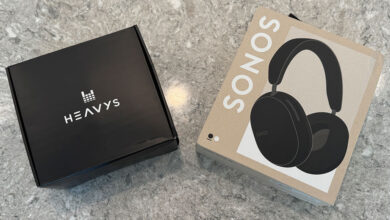Sonos Arc Ultra Review: A Worthy Upgrade or Just Hype?

As a long-time user of the original Sonos Arc, I approached the new Sonos Arc Ultra with a mixture of excitement and skepticism. The original Arc has long been a staple in my home entertainment setup, offering impressive Dolby Atmos sound and seamless integration with the Sonos ecosystem. So, when the Arc Ultra was announced with promises of enhanced sound quality, design upgrades, and expanded connectivity, I was eager to see if it could live up to the hype and justify its higher price tag. After spending time with the Ultra, I can say that Sonos has not just refined its flagship soundbar but reimagined what a standalone audio system can offer. But is it enough to tempt existing Arc users to upgrade? Let’s dive in.
Design and Build
Visually, the Sonos Arc Ultra bears a strong resemblance to the original Arc. Sonos has retained its minimalist aesthetic, with a perforated grille that covers most of the chassis. However, there are subtle design tweaks. The touch controls (play/pause, skip, volume slider, and voice control) have been relocated to a ledge at the back, away from the main grille. The soundbar is slightly wider (118cm vs. 114cm) but shorter in height (7.5cm vs. 8.7cm), which reduces the likelihood of obstructing the TV screen when placed in front. It’s also 350g lighter, making it more wall-mount friendly.

Importantly, the Arc Ultra requires an open placement to achieve optimal sound dispersion, as the upward-firing drivers need space to function properly. Placing it in a nook or under a shelf might impair its performance.
Features and Connectivity
The Arc Ultra boasts a 9.1.4-channel configuration, an upgrade from the original Arc’s 5.0.2 setup. This includes 14 custom-engineered drivers, powered by 15 Class D amplifiers. Among these are seven tweeters, six midrange woofers, and a new Sound Motion woofer. This novel woofer uses four lightweight motors to deliver more air displacement, doubling the bass output of the original Arc while reducing mechanical vibrations for a more balanced sound profile.
One downside, however, is the lack of DTS audio support, as the Arc Ultra focuses exclusively on Dolby Atmos for spatial audio. Connectivity is also somewhat limited, featuring only a single HDMI eARC port and no dedicated HDMI inputs, which means external sources must be connected via the TV itself. For users with multiple gaming devices or limited HDMI 2.1 ports on their TVs, this could be a challenge.
On a positive note, Bluetooth connectivity is a first for Sonos soundbars, and Trueplay calibration now extends to Android devices, enhancing accessibility and ease of use.
Performance
The Arc Ultra delivers impressive audio performance. The soundstage is clean, precise, and expansive, with a notable improvement in bass depth compared to the original Arc. The enhanced bass adds richness to the sound profile without overwhelming the overall audio balance.
Dialogue clarity has also been improved, thanks to the addition of a front-firing speaker array dedicated to the center channel, ensuring that speech remains crisp and intelligible. The soundbar excels at detail retrieval, capturing subtle nuances across various types of content.
However, the absence of HDMI passthrough and DTS support may be a dealbreaker for some users, especially those with extensive home theater setups. Additionally, while the Sonos app offers solid control and customization, it has been criticized for occasional connectivity issues, which can hinder the overall user experience.
Comparison with Competitors
In a competitive market that includes rivals like the Sony Bravia Theatre Bar 9 and the Samsung HW-Q990D, the Sonos Arc Ultra holds its ground in terms of sound quality and design.
- The Sony Bravia Theatre Bar 9 is often discounted, bringing its price closer to the Arc Ultra’s, and offers HDMI passthrough and support for both Dolby Atmos and DTS:X, offering greater flexibility for diverse content sources.
- The Samsung HW-Q990D is pricier but includes a wireless subwoofer and surround speakers for a more immersive surround sound experience, along with multiple HDMI inputs and support for various audio formats, making it a more versatile choice for users with complex setups.
Is the Arc Ultra Worth the Upgrade?
From a hardware perspective, the Sonos Arc Ultra represents a significant leap forward. It offers enhanced bass performance, improved dialogue clarity, and a more immersive soundstage. The design is sleek, and the addition of Bluetooth and expanded Trueplay support make it an attractive option for users seeking a high-quality, all-in-one soundbar solution.
However, the lack of HDMI passthrough and DTS support could be limiting for some users, particularly those with advanced home theater setups. Moreover, while the Sonos app has improved over time, occasional issues still plague the user experience, which could be frustrating for those expecting seamless integration.
Ultimately, if you’re already happy with the original Arc and don’t mind its limitations, the Arc Ultra may not be essential for you—especially if you’re not keen on paying the higher price tag. But for those seeking premium sound, enhanced bass, and a more immersive audio experience, the Arc Ultra is a worthy upgrade.



